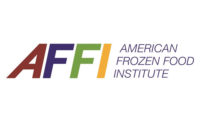Reuters: "Nestle eyes greater growth in frozen"
Reuters reported that Nestle SA, the world's biggest food company, plans to expand in the United States' bottled tea and frozen food markets -- where the business climate is expected to remain difficult in the near future.
The Swiss company reported nine-month results last Friday, beating forecasts with a 5.7 percent rise in sales thanks to strong demand in emerging markets, price increases and a thriving Nespresso coffee business, said Reuters. It also affirmed its 2010 sales growth and margin outlook despite concerns about higher commodity prices and the economy.
In a separate interview, Brad Alford, chief executive of Nestle USA, said he sees big opportunities in frozen foods and said growth for the company would likely be both organic and through acquisitions.
"I am very bullish on frozen food. I think there are many, many more opportunities in frozen food," Alford said. "We live in an 'and' world. So we will be looking organically and for acquisitions."
Nestle Chief Executive Paul Bulcke said acquisitions were among the company's priorities for using its cash reserves, along with investing in research and development and factories, marketing and paying dividends.
The food sector has seen its share of merger activity and Bulcke said Nestle is on the prowl for acquisitions.
"That's what we do always. Is it more than in the past? No. It's always very intense," Bulcke told Reuters.
Earlier this year, Nestle bought frozen pizza brands, including DiGiorno and Tombstone from Kraft Foods Inc and agreed last month to buy Waggin' Train, a dog snacks business.
With unemployment in the United States remaining high, the business environment should remain difficult in the short term, said Alford, who manages such U.S. brands as Coffee-Mate creamers, Stouffer's frozen meals and Edy's ice cream.
Still, he expects to be able to put through some price increases on certain products, whose raw material costs have gone up recently.
Nestle's biggest ingredients are cocoa, sugar and dairy. Alford said Nestle is able to use a combination of price increases, easing promotions and cost cuts to offset the commodity inflation, which is greater this year, fiscal 2011, than last year.
The Swiss company reported nine-month results last Friday, beating forecasts with a 5.7 percent rise in sales thanks to strong demand in emerging markets, price increases and a thriving Nespresso coffee business, said Reuters. It also affirmed its 2010 sales growth and margin outlook despite concerns about higher commodity prices and the economy.
In a separate interview, Brad Alford, chief executive of Nestle USA, said he sees big opportunities in frozen foods and said growth for the company would likely be both organic and through acquisitions.
"I am very bullish on frozen food. I think there are many, many more opportunities in frozen food," Alford said. "We live in an 'and' world. So we will be looking organically and for acquisitions."
Nestle Chief Executive Paul Bulcke said acquisitions were among the company's priorities for using its cash reserves, along with investing in research and development and factories, marketing and paying dividends.
The food sector has seen its share of merger activity and Bulcke said Nestle is on the prowl for acquisitions.
"That's what we do always. Is it more than in the past? No. It's always very intense," Bulcke told Reuters.
Earlier this year, Nestle bought frozen pizza brands, including DiGiorno and Tombstone from Kraft Foods Inc and agreed last month to buy Waggin' Train, a dog snacks business.
With unemployment in the United States remaining high, the business environment should remain difficult in the short term, said Alford, who manages such U.S. brands as Coffee-Mate creamers, Stouffer's frozen meals and Edy's ice cream.
Still, he expects to be able to put through some price increases on certain products, whose raw material costs have gone up recently.
Nestle's biggest ingredients are cocoa, sugar and dairy. Alford said Nestle is able to use a combination of price increases, easing promotions and cost cuts to offset the commodity inflation, which is greater this year, fiscal 2011, than last year.
Looking for a reprint of this article?
From high-res PDFs to custom plaques, order your copy today!





